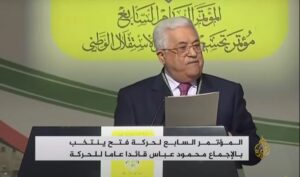Five months have elapsed since the onset of the war.
Israel has not fully realized the two primary objectives set by its political leadership for the IDF, but it has made partial strides.
With effective management, it seems likely to reach these goals entirely in the coming months.
Israel succeeded in securing the release of over a hundred hostages, but 134 individuals remain in Hamas captivity.
The IDF has disbanded 18 out of 24 battalions of Hamas’s military wing and is poised to complete this task in the central and Rafah areas.
This conflict is expected to persist even after dismantling all Hamas battalions.
The IDF will continue to combat Hamas terrorist cells, locate weapon caches, and destroy the extensive tunnel network that Hamas has been constructing for years.
Simultaneously, the IDF has divided the Gaza Strip by constructing a road that bisects it and is establishing a buffer zone along the border to safeguard Israeli settlements from terrorist infiltration.
In contrast to Israel’s strategic advancements, the leadership of Hamas is in disarray.
The military leadership, led by Yahya Sinwar and Muhammad Def, is evading capture in tunnels, while the IDF intensifies its pursuit to neutralize them.
Following Hamas’s deadly attack on October 7 targeting settlements surrounding Gaza, the IDF has seized more than 70 percent of the Strip.
Among the Palestinians, over 30,000 casualties have been reported, including 13,000 confirmed Hamas terrorists, with an additional 60,000 wounded.
Hamas’s objectives, including the aspiration for “Palestine from the river to the sea ,” have been thwarted.
Israel has reaffirmed its presence in the Gaza Strip, which will remain under tight control, surrounded by barriers, with the IDF maintaining operational readiness.
Hamas sought to expel Israel from the Middle East and undermine normalization efforts with Arab nations.
However, these efforts have been unsuccessful, and there is potential for further normalization agreements, particularly with Saudi Arabia, a leading Sunni nation.
The rehabilitation of the Gaza Strip hinges on Israel’s cooperation, as it controls the territory’s security.
The dream of establishing an independent Palestinian state seems increasingly distant, especially with the Biden administration unable to impose such an idea against the will of the majority of Israelis, as reflected in public opinion polls.
Hamas’s assault, dubbed “al-Aqsa flood,” initially targeted Israeli settlements near Gaza but has since wreaked havoc across the entire Strip, resulting in heavy casualties.
Israel’s military success in Gaza will bolster its control over Judea and Samaria.
The IDF is currently dismantling terrorist infrastructure in northern Samaria, a campaign set to escalate following Hamas’s defeat in Gaza.
The Palestinians must come to terms with their loss in this conflict.
Israel’s permanence in the region is assured, while Hamas will be remembered in Palestinian history as the catalyst for a new Nakba (catastrophe) in October 2023, inflicted upon the residents of the Gaza Strip.
Iran, a prominent supporter of Hamas and Islamic Jihad, stands to lose its significant influence in the Gaza Strip, having made insufficient efforts to preserve it.
Furthermore, the global Muslim Brotherhood movement suffers a setback, as the Islamic Emirate it fostered in Gaza since 2007 has ceased to exist.
The Palestinian predicament will endure without a resolution due to its leadership’s failings, mirroring the situation at the conflict’s outset over a century ago.
Unfortunately, the Palestinians have yet to glean any constructive lessons from this protracted period of strife.




